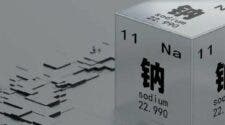The Galaxy Note series certainly has a special place in the heart of those who have owned any of the good smartphones that came under this moniker. It’s thanks to Samsung’s legendary lineup that brands started to risk themselves with larger smartphones, the so-called phablets, thus consolidating the current market traditions. However, if we’re about to point out the bad in this lineup, there is a particular shadow that still flies above the brand’s legacy today, it’s the Galaxy Note 7. It may sound like an exaggeration, but some American airports still have some warnings about the dangerous Samsung Galaxy Note 7, despite the remote chance of people flying with these smartphones.

The Samsung Galaxy Note 7 Fiasco – Throwback Time
For those unaware, the Samsung Galaxy Note 7 launched way back in 2016 as a promising upgrade over its predecessor. The device had a cool design that fell in line with the lineup’s legacy and decent specifications. It was also Samsung’s first smartphone to launch with the iris scanner. A revolutionary authentication method that didn’t do any revolution. This technology was quite gimmicky, or maybe just not convenient enough, like the fingerprint scanner, and was buried. However, going back to the device, it could have been another success for the lineup, but it had a big failure in the battery design that made some devices enter in spontaneous combustion.
Shortly after its launch, cases of the device catching fire all of a sudden spread across the world. There were 35 registered cases of damaged smartphones. Samsung began an emergency recall while it carried out some investigations into the issue. A few months later, after the recall, the brand concluded that the issue was caused by a faulty battery design. It was one of the biggest recalls in smartphone history. Any other brand wouldn’t survive a fiasco like this, but it was Samsung, one of the biggest in the segment. Samsung carried out multiple rounds of phone recalls. The first were voluntary, then the brand offered an alternative for those who did not want to return the device. It released an upgrade that gradually limited the phone’s charging and thus its usability.
The Biggest Recall in Smartphone’s History
In January 2017, 120,000 of the 3 million Note 7s originally delivered remained in circulation. That was a short amount considering the whole figure. Almost ten years passed, and airports still warn about the device. I’m not so surprised, after all, there was a particular incident with a turned-off Galaxy Note 7 blowing during a flight.

Despite all the fears, the chances for an incident with the Galaxy Note 7 in an Airplane are near zero. It’s hard to believe there is someone still using this phone today. After all, they would have big troubles using a smartphone with outdated software. The handset launched with Android 6.0.1 Marshmallow, and anyone using it would face some issues with compatibility with apps. Also, it’s hard to believe that a problematic battery would survive for nine years, considering that it certainly reached the end of its useful life before these nine years. Despite the small chances, Airport airlines are still there, remembering Samsung in its big shadow.
The Galaxy Note 7’s Shadow Keeps Samsung on a Safe Approach When it Comes to Battery Tech
We can easily say that some brands wouldn’t survive a fiasco like this, but Samsung was a giant in this business and also had other important segments to support the losses. The brand delivered 3 million smartphones and had to recall the largest part of them, followed by refunds. The cost of this move was immense, but the brand managed to withstand. It recalled the smartphones and learned from the mistakes. The brand even went on to sell a Galaxy Note 7 FE months later, which was mostly a refurbished Note 7 with a safe battery. Unfortunately, this shadow still threatens Samsung and probably prevents it from making courageous changes in the battery technology of its smartphones.

Silicon-Carbon – A Revolutionary Tech That Samsung Owners Will Miss
Chinese brands are now moving to the new generation Si-C (Silicon-Carbon) battery. It provides higher energy density and allows them to keep devices thin. Samsung, however, will stick with the traditional lithium battery. According to behind-the-scenes information, it is precisely the historical legacy of the Note 7 that makes Samsung reluctant to change. The same probably goes for the use of fast-charging technology. While the sky is the limit for Chinese brands, Samsung continues to deliver 25W and up to 45W charging. Its current batteries and the charging rate it uses are reliable, and the brand does not want to rush with unexplored technology until it is completely safe. In any case, Samsung is not alone in this regard as Google and Apple are also playing a conservative approach.
Smartphones like the Galaxy S25 Edge and the iPhone 17 Air would certainly benefit from the use of the Si-C batteries. The same goes for the foldable smartphones like the Galaxy Z Fold and Z Flip series. However, Samsung may still take some years to embrace this technology. Until then, Chinese brands like Honor, Xiaomi, and OnePlus will benefit from offering smartphones with ridiculously large batteries.





